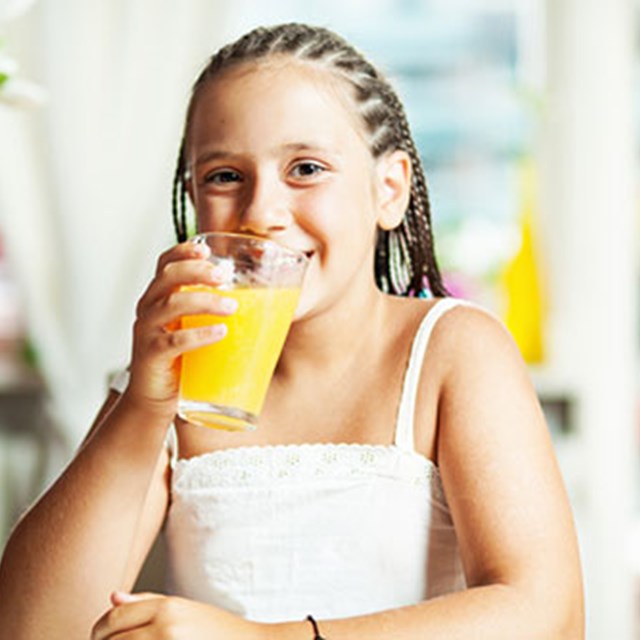
Families want to provide children with the healthiest options possible. Colorful packaging can make it difficult to decide between fruit drinks and fruit juices when shopping. Though fruit juices and fruit drinks are both tasty, there are striking differences between them when comparing nutrition.
Let’s compare
Juices consist of 100% fruit juice and provide children with vitamins and minerals they need to grow strong and healthy. Sometimes the juice is made from combining a fruit juice concentrate with water. Other times it is juice not from concentrate.
Fruit drinks are mostly sugar, often labeled as high fructose corn syrup, and water. They usually have very little or no fruit juice at all. Fruit drinks have artificial colors and flavors to achieve the look and taste of juice. Fruit drinks also lack the vitamins and minerals children need to develop their body and mind properly.
Be aware, know what you’re buying
Labels can be tricky to read until you get the hang of them. An item with packaging that says, “contains real fruit juice” might not be 100% juice. When an item is labeled “blend, punch, aid or cocktail” it is not 100% juice. Fruit juices will always be labeled “100% juice” and contain 100% fruit’s juice from one or a combination of fruits and vegetables, such as apple, orange, pineapple, carrot, etc.
To truly know the contents of the bottle, turn the product around and look for the ingredients near the nutrition label. The ingredients listed should be juice from one or several fruits and vegetables. Other ingredients may be preservatives, such as ascorbic or citric acid, or water if the juice is made from concentrate. If the label includes sugar or high fructose corn syrup, put that product down and look for another made from 100% juice.
How much is too much?
Consider several factors when deciding the right amount of juice for your child. Variables such as gender, age and physical activity should all contribute to your decision.
The American Academy of Pediatrics (AAP) recommends:
- Birth to 6 months - No fruit juice, unless it's used to relieve constipation.
- 6 to 12 months - ½ cup of juice can be provided each day, but water is a better choice. Juice should be served in a cup (not a bottle) to avoid tooth decay.
- 1 to 6 years - ½ cup to ¾ cup or up to 6 ounces a day.
- 7 to 18 years - 1 cup to 1 ½ cup or up to 12 ounces a day.
One cup of 100% fruit juice is equivalent to one cup of fruit, but often contains less of the vitamins, minerals and fiber in a cup of whole fruit.
Moderation is key
Although fruit juices are a better alternative to fruit drinks or sport drinks, whole fruits are still preferred because they contain fiber and other nutrients juices lack.
Fruit juices are sweet, making it easy for your child to drink too much of them. Even if fruit juice has no added sugar, juice still has natural sugar from the fruit. Drinking too much juice is associated with childhood obesity and tooth decay due to the sugar content and acidity level of juice. Restrict or moderate children’s juice intake to avoid these risks. Try diluting fruit juice with water and offer it only with a meal rather than between meals. If children are thirsty throughout the day, experts recommend offering them water or low-fat milk.

